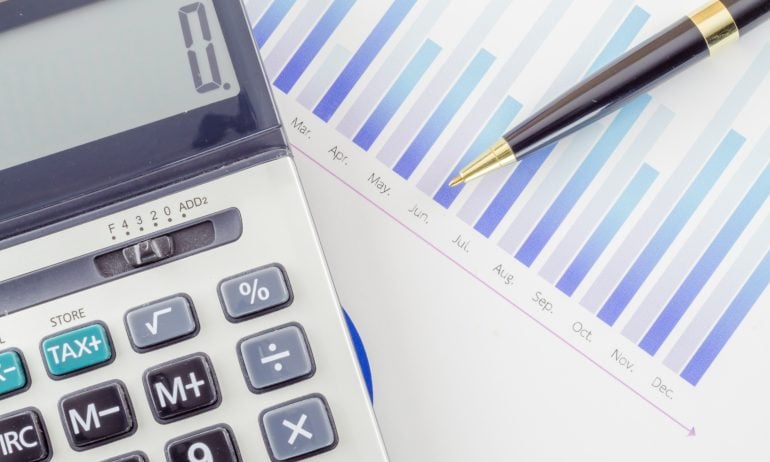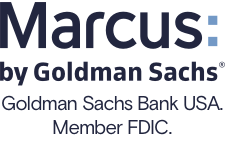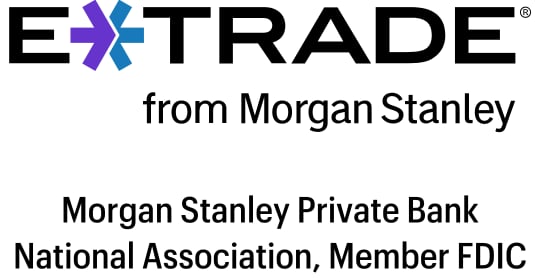What the 2025 Fed Rate Decisions Mean for CDs
Changes to the federal funds rate can affect yields on certificates of deposit.

Many, or all, of the products featured on this page are from our advertising partners who compensate us when you take certain actions on our website or click to take an action on their website. However, this does not influence our evaluations. Our opinions are our own. Here is a list of our partners and here's how we make money.
The Federal Reserve decided to keep the federal funds rate the same on March 19, 2025. This decision comes after the Fed made three rate cuts in the second half of 2024 and amid recent uncertainty over the direction that inflation may take in 2025. The Fed rate’s current target range of 4.25% to 4.50% is still high compared to what it was for most of the past two decades.
» COMPARE: NerdWallet’s best CD rates
When is the next Fed meeting?
This rate, which is what commercial banks use to borrow and lend money to one another, remained unchanged from mid-2023 through mid-2024. The last rate increase was by 0.25 percentage point on July 26, 2023.
This rate doesn’t directly raise or lower rates on certificates of deposit, but it can affect them indirectly. When there’s a Fed rate increase, you might see higher CD rates. A lowered Fed rate typically leads to lower CD rates. Here’s a closer look at how it works.
Marcus by Goldman Sachs High-Yield CD

4.25%
1 year
Bread Savings™️ CD

4.50%
6 months

Federally insured by NCUA
Alliant Credit Union Certificate

4.00%
1 year

Member FDIC
Discover® CD

4.00%
1 year
Certificates of deposit: 3.50% APY or higher
The most competitive rates on CDs for three-month to one-year terms remain in the mid-4% range, with the best long-term CDs (three- to five-year terms) in the mid-3% to high 3% range, according to NerdWallet analysis in late February 2025. CD rates continue to be higher than they’ve been for most of the past decade, and just as multiple Fed rate increases pushed rates up in the past few years, Fed rate cuts have begun driving them downwards. The highest rates, regardless of the rate environment, tend to be at online banks and credit unions.
» LEARN MORE: CD rate forecast: Are CD rates going up in 2025?
Fed rate decreases mean lower CD rates
As the U.S. central bank, the Federal Reserve tries to keep the economy steady using an important rate it can influence: the federal funds rate. This is roughly the cost of borrowing cash overnight between banks. Typically the Fed lowers its rate to help stimulate the economy and raises it to help curb inflation.
» Learn more: What the Fed rate increase means for savings accounts
Banks generally follow the direction of the Fed funds rate in setting their rates on loans and savings accounts, including newly issued CDs. So a lower Fed rate can result in lower CD rates, but it may not happen instantly.
Locking in high CD rates before they fall further might make sense if your current savings account rates are near 0% and thus not helping to fight inflation.
» CONSIDER: Ways to protect your savings from inflation
Are CD interest rates rising?
The short answer is no. We started entering a falling-rate environment last year, but things have gotten less clear in 2025.
“We're in an uncertain environment. There are a lot of moving pieces right now. The inflation numbers have been jumping around. The tariff situation is changing on a day-to-day basis,” said Adam Stockton, head of retail deposits and lending at the banking analytics firm Curinos. Stockton added that whether the Fed increases or continues decreasing rates depends on the direction that inflation ends up going.
Online banks and credit unions, which have some of the highest CD rates, have steadily lowered their rates since January 2024, with the biggest drops occurring after the Fed’s first rate cut in September 2024, according to a NerdWallet analysis. Rate drops have slowed down at the start of 2025, and some longer-term rates saw incremental lifts. See more about current CD rates.
National average CD rates for one- to five-year terms have also started to drop, but more slowly than high-yield rates, according to a NerdWallet analysis of rate data from the Federal Deposit Insurance Corp. Meanwhile, some of the largest U.S. banks have barely moved their standard CD rates for years, regardless of Fed rate changes.
High CD rates for now
The Fed lowered its benchmark rate multiple times in the second half of 2024. As a result, banks and credit unions have started lowering CD rates. With a CD, you can lock in high rates while they’re still around.
Note: CD rate changes impact only new CDs available at banks and credit unions, not existing CDs you have. Step-up and bump-up CDs, which are discussed more below, are the two exceptions.
» Learn more: Historical CD rates
Marcus by Goldman Sachs High-Yield CD

4.25%
1 year
Bread Savings™️ CD

4.50%
6 months

Federally insured by NCUA
Alliant Credit Union Certificate

4.00%
1 year

Member FDIC
Discover® CD

4.00%
1 year
Savings accounts vs. CDs
A Fed rate drop can lead to lower rates for regular savings accounts and CDs, but the differences between these accounts can impact which to use and when.
A regular savings account usually has a variable rate, meaning it can change. Your money may earn more interest when the rate rises and less interest when the rate drops. Since you can add or withdraw money over time, this account provides a flexible way to build up savings. See the latest high-yield savings account rates.
A CD generally has a fixed rate. When you open a CD, you lock up an upfront sum of money at one interest rate for a term usually ranging from three months to five years. CD rates tend to be higher than regular savings account rates, but in exchange, you lose access to money in a CD until the term ends unless you pay a penalty to withdraw early.
CDs can be good for setting aside a sum earmarked for a large future purchase, such as a car or house, or simply as a low-risk place for some savings you’ll need years from now. Learn more about when CDs are worth it.

Why would my bank change CD rates but not mine?
A bank generally changes rates on newly issued CDs over time, but CDs that customers already opened don’t have rate changes. The main exceptions are step-up and bump-up CDs, which are structured for potential rate increases during a term. However, bump-up CDs may not have the opportunity for rate increases anytime soon, since these CDs only allow such increases if newly issued CDs of the same term and at the same bank go up.
How to find high CD rates
1. Check out CDs at online banks or credit unions.
Every bank sets its CD rates, but only some have high-yield CDs. Online-only institutions can afford to offer higher rates than brick-and-mortar banks since they don’t have the costs associated with managing a branch network. See the best CD rates.
2. Consider longer CD terms or a CD ladder.
The standard trend is the longer the CD term, the higher the rate. Longer can mean four- to five-year CDs compared to six-month to one-year CDs. Bear in mind, though, another trend: The longer the term, the higher the penalty for an early withdrawal. The penalty is usually interest earned over a number of days or months, or even years.
If you want both ongoing access to some money in CDs and high rates, you might opt for a CD ladder. This involves opening multiple CDs with staggered end dates, allowing you to choose to reinvest or withdraw funds after each CD matures. Learn more about CD ladders.
Keep an eye on CD rates
CDs can be a great way to set aside some savings for a near-future goal. And although each Fed rate decrease might not lead to dramatic changes, it's still a good idea to monitor your bank or credit union’s response and compare it with those of other banks and credit unions. In addition, see other ways to save without a savings account.
Other ways to save
As you factor CDs into your savings strategies, consider looking into high savings account rates as well as bank bonuses, which can be for checking or savings accounts. If you want a broader overview of account options, here's a guide to multiple ways to earn more interest.








